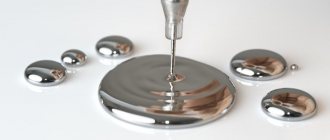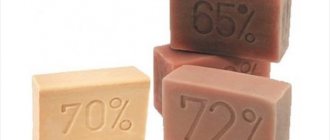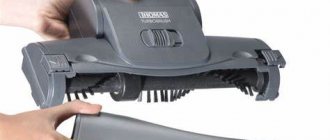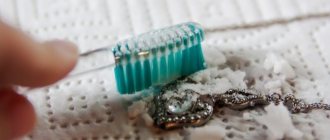Liquid metal
Since childhood, everyone knows that metal is something durable, hard, and shiny. The definition of chemical elements belonging to the group of metals was given by Mikhailo Lomonosov two and a half centuries ago. But, as always happens in practice, every rule has its exceptions. So metals do not always look the way the great Russian scientist determined they should look. Here's mercury. This is a metal that occupies the 80th cell of the table of chemical elements developed by the great chemist D.I. Mendeleev. But under normal human conditions, mercury is not a solid substance, it is a liquid. And this is the only liquid metal known to science today.
Quite a lot can be said about the amazing properties of this chemical element. But precisely because of its qualities, mercury is a special chemical element. Where is mercury used in modern industry, showing its characteristic features? There are many such industries - from the well-known medical thermometer to nuclear-hydrogen energy.
How does the mercury service work?
By contacting the city mercury service, you can get 24-hour assistance, any day of the week. For privileged categories of citizens, cleaning is carried out at a reduced price.
“Eco-expert” guarantees the absence of traces of mercury; work is carried out with control measurements using a mercury gas analyzer. A one-time cleaning is carried out before the air is removed until it fully complies with the SanPin MPC standards. All chemicals are safe for people. Hotline.
Mercury at home
The international community recognizes mercury as one of the most aggressive substances that pollute the environment. But without this chemical element it is impossible to imagine many areas of human life. At home, many people probably have thermometers, where the temperature indicator is a column of mercury, fluorescent lamps, the bulbs of which are filled with mercury vapor mixed with the inert gas argon, and some batteries in mobile phones. These items in themselves are not dangerous, but necessary and useful. But if damaged, they can cause serious health problems for everyone at home. The only question that should be asked if a broken thermometer suddenly appears at home is: “What should I do?”
What to do if the contents of a broken thermometer have been lying on the carpet for a long time?
When mercury remained on the surface for a long time, only specialized services can help. Its representatives not only provide services for the collection of toxic material - demercurization, but also take measurements in the house.
However, calling a team of specialists costs money, and not everyone has the opportunity to pay. If you have to eliminate the consequences yourself, you can use the instructions given above.
Advice! Additionally, all surfaces will need to be treated with bleach. Not only the floor, but also the walls, furniture, doors and windows.
You can also call the Ministry of Emergency Situations, but they will only give verbal recommendations and will not come.
Such a familiar thermometer
Everyone has been familiar with glass thermometers with a thin vacuum flask filled with mercury - a capillary - and a division scale since childhood. This is the most familiar and necessary medical device in any family. Yes, now you can buy electronic thermometers of various shapes - from those designed for infants in the form of a pacifier to non-contact ones. But still, the vast majority of people consider mercury thermometers to be the most accurate and practical. But few people think about the danger lurking in the thermometer.
Why, it would seem, was it necessary to invent a mercury thermometer if the substance that helps measure body temperature is very dangerous? But it was mercury that became the liquid that satisfies the needs of accurate temperature measurement, expanding evenly as it increases, rising up the capillary of the thermometer. The mercury thermometer was invented in the 18th century as an improved version of the alcohol thermometer. In our country, the Celsius scale is used to measure temperature; in Western countries and America, temperature is measured in Fahrenheit. Using a mercury thermometer at home, few people think about the answer to the question “what neutralizes mercury” if the thermometer suddenly breaks.
Living and mercury
Mercury has been known to mankind since ancient times. Beautiful, scarlet stones of cinnabar, a natural mercury mineral, were mined by people to obtain bright paint; it is not for nothing that the stone is called “dragon’s blood” in translation from ancient Persian. And even then, mercury was used for amalgamation - one of the methods for purifying gold. At the same time, it was known about the toxic properties of mercury compounds, such as sublimate, which is still used as a disinfectant today. Mercury is a unique metal; it begins to melt at a temperature of approximately -39 degrees Celsius. Everyone has heard that it is very poisonous. Why mercury from a broken thermometer is dangerous to humans needs to be clarified.
If mercury is exposed to open air, it begins to evaporate like water, and active evaporation begins already at 18 degrees Celsius. Mercury vapor saturates the air in a room, especially if it is not ventilated. And such air becomes dangerous for humans, domestic animals, and even indoor plants and fish in an aquarium. The peculiarity of this chemical element is that it is capable of accumulating, that is, accumulating, in a living organism, and it is almost impossible to remove it. Mercury accumulates until a critical limit for its concentration in the body is reached. Moreover, in the first stages of such poisoning, the symptoms are so mild that they can be mistaken for fatigue or a mild cold, but not for a serious health problem that is life-threatening.
Antidote for mercury poisoning
Almost all sources write that the most effective antidote is Unithiol, a drug whose chemical formula allows it to bind heavy metal enzymes and restore affected organs. Therefore, it actually is an antidote. It can be administered intramuscularly, intravenously, or taken orally by mouth if the victim is conscious. When administered intravenously, it causes quite severe pain, so it makes sense to inject into the muscles or drink through the mouth. The dosage and method of use are well described in the instructions.
Handy remedies as antidotes
Among the most common products that can easily end up in your apartment are:
- raw eggs (white used)
- milk (more precisely methionine - an amino acid contained in milk)
- Activated carbon
Of course, it makes sense to use these remedies only if you don’t have a normal antidote at hand. For example, you need to run to the pharmacy to get it, but help needs to be provided to the person right now. The fact is that they are not very effective due to the fact that they are slowly absorbed by the stomach and enter the bloodstream just as slowly.
Hardly available antidotes for mercury salt poisoning
The first of these antidotes is tetacin - calcium and magnesium. Only doctors and in a hospital can administer such “miracle drugs” to you. The fact is that, firstly, no one will just give you such drugs at the pharmacy anyway. Well, the second point is that they are administered with the addition of glucose or saline solution. The second such drug is Strizhevsky’s antidote. They inject 100 ml at once, and then look at the circumstances. Further use and dosage are calculated depending on the complexity of the intoxication. It can also only be administered by medical workers within the walls of the relevant institution.
And the last - the final antidote from the list of hard-to-find ones - is sodium dimercaptopropane sulfonate ... Despite its complex name, dimercaptopropane sulfonate is extremely effective! Binds mercury salts and removes them from the body. It is indicated for poisoning even in small children and pregnant women, although with great caution.
Of course, getting them may not be so difficult, but using them correctly is more difficult. In any case, if you still have one of them in your medicine cabinet, carefully read the method of use and dosage. In order to provide first aid to a person, they will be quite enough. Well, then you definitely need to call an ambulance. The earlier the better.
What's happening?
Mercury is dangerous for all living things, it disrupts metabolic processes, a person initially feels weakness and apathy, which over time develop into disruptions in the functioning of all organs: the kidneys, liver, heart, lungs suffer from excess mercury in the body. Death can be caused by mercury poisoning from a thermometer. The symptoms and consequences of inhaling mercury vapor or, even worse, ingesting mercury through the mouth can be very scary.
Mercury poisoning, like any other toxic and dangerous substances, can be acute or chronic. Acute poisoning is characterized by headache, vomiting and drooling, sore throat and stomach, swelling and bleeding of the gums, and body temperature may rise. Acute poisoning occurs approximately 2 hours after a significant dose of mercury enters the body.
Chronic poisoning is the result of prolonged inhalation of mercury vapor in low concentrations. It often develops in those people in whose home a mercury thermometer was once broken, but the cleaning and neutralization of the substance was not carried out as it should have been done.
Demercurization in medical institutions
The first action should be to clear the premises of people. The work is performed in protective suits. A solution to neutralize mercury should be prepared in advance. A container is allocated, which is additionally marked: “Demercurization of premises.” It must be filled with a solution that neutralizes the metal in liquid form. This substance is used to treat surfaces after collecting mercury balls. After half an hour, they begin to remove it, using water without additives.
Health care facilities have kits prepared specifically for mercury releases. The kit includes:
- adhesive plaster;
- gauze bandage;
- robe;
- latex gloves;
- containers for preparing a neutralizing solution;
- soap shavings and soda ash in portioned bags.
Thanks to such kits, the cleaning of mercury from various surfaces is accelerated. After completing the procedure for eliminating traces of heavy metal, you need to take a shower and rinse your mouth with a solution of potassium permanganate (a pale pink liquid is prepared).
If this happened
A broken thermometer seems like such a small thing. You just need to collect the fragments, remove the mercury balls, and wash the floor. But it's not like that at all. A broken mercury thermometer is a serious danger for everyone at home. Mercury vapor poisoning begins as soon as this substance enters the open air from a sealed glass flask. The question of what neutralizes mercury fades into the background, giving way to the question of how to collect it. Sweeping begins, a vacuum cleaner and wet rags are connected. But it is strictly forbidden to use what people usually use to clean up when removing a broken thermometer.
Mercury is a liquid, and it’s impossible to collect it, say, like plasticine, into a ball, and it’s also impossible to wipe it with dry rags. From the impact that breaks the thermometer capsule, the substance breaks up into tiny particles scattered around the room. Working with a broom only makes the situation worse, as sorghum twigs or synthetic bristles crush the mercury balls into even smaller pieces. A vacuum cleaner will not help either, since, on the one hand, it removes mercury, and on the other, along with the exhaust air in the form of tiny dust, it sends it back throughout the room, besides, the vacuum cleaner that removed the mercury will then have to be disposed of, because it will be cleaned of the smallest particles mercury clogged into all the parts will not work.
Wet rags cannot remove mercury, and particles of the substance that has begun its toxic work can get into the cracks of the floor and into the wool fibers of the carpet. If in the room where the thermometer broke there is a carpet or rug on the floor, then it is easier to dispose of them by wrapping them in a thick plastic bag and removing them from the room. But the most convenient way to remove mercury balls from the floor is with a regular medical bulb, collecting the mercury in a glass jar.
Cleaning Precautions
You need to be extremely careful when working with dangerous metal:
- When in an infected area, use a medical mask and gloves.
- Clothing that has been exposed to mercury elements must be disposed of. It is packed in plastic bags and handed over to the management company.
- It is recommended to throw away the shoes or take them to a specialized dry cleaner. It is prohibited to go out in contaminated shoes; small particles may remain on the soles.
- Mercury balls are placed in a jar filled with water. Then it is tightly closed with a lid. Disposing in an outdoor container or garbage disposal is dangerous. It is recommended to take it, along with clothes and shoes, to a sanitary and epidemiological station for neutralization.
- It is also prohibited to flush it down the drain; metal is deposited on the surface of the pipes. Mercury vapor circulates, causing severe harm to home occupants.
Cleaning a broken mercury thermometer step by step
If there is a broken thermometer, what should you do? The answer to this question will consist of the following recommendations:
- Take all household members, including animals, out of the room, or better yet, out of the apartment, for a walk until the cleaning is completed.
- Close the door of the room.
- Open all windows wide. The influx of cold air will restrain the active evaporation of mercury and will reduce its concentration.
- Put on a medical mask, or better yet a respirator, and rubber gloves, and change into clothes that you won’t mind parting with after cleaning.
- Prepare a medical bulb - a syringe, a glass jar with a tight-fitting lid, potassium permanganate or bleach, cold water.
- Turn on bright lighting, as mercury is a shiny metal and will be easily visible in bright light.
- The most convenient way to collect mercury balls is by sucking them up with a syringe and dropping them into a jar; This medical item makes it easier to fish out mercury from cracks in the floor and under baseboards. There are recommendations for cleaning up mercury with metal wire or sheets of paper, but mercury constantly rolls up and crumbles into small droplets at the slightest careless movement, so there is nothing more convenient than a syringe at home.
- After the mercury has been collected, the place where the thermometer was broken must be treated with a concentrated solution of disinfectants - potassium permanganate or bleach, diluted with cold water.
- A jar of collected mercury, a syringe, fragments of a broken thermometer, a gauze bandage, a respirator, and clothing must be taken to the SES, where they must be accepted for disposal. Under no circumstances should these items be thrown into the trash.
Security measures
If a mercury thermometer breaks in a room, the following rules must be observed:
- Remove everyone from the room, especially children.
- Open all windows and ventilate the room for at least 12 hours.
- Do not touch mercury with bare hands and avoid inhaling its vapors.
- Do not throw mercury balls and objects used to remove it into the sink, toilet or trash container.
- Treat the surface on which mercury has come into contact with a solution of chlorine or potassium permanganate.
On a note. When evaporated, 2 g of mercury contained in a thermometer poisons up to 6000 m3 of air. To determine the concentration of Hg in the air, it is recommended to invite employees of the sanitary and epidemiological service.
For the purpose of self-sanitation, a person who has come into contact with this metal must wash and wipe the body with a weak solution of potassium permanganate. The items it was in during cleaning must be disposed of. To remove mercury compounds through the kidneys, you should drink several tablets of activated carbon with plenty of liquid.
How does baking soda and soap work?
Some sources contain information that mercury can be neutralized using a soap and soda solution. This is actually an ERROR.
Attention! Soda and soap do not enter into an oxidation reaction with mercury, which means they are not able to neutralize it.
Soap and soda solution
There are several options for compositions for cleaning rooms contaminated with mercury from broken appliances. One of them is a solution based on soda and soap.
Ingredients:
- 200 g laundry soap;
- 250 g soda;
- 5 liters of water.
The components are combined and mixed thoroughly.
The product is intended for secondary cleaning, i.e. AFTER the mercury has been collected and all surfaces have been treated with a solution of potassium permanganate and hydrochloric acid (or the like).
What neutralizes mercury?
Mercury is a dangerous substance for living things. It belongs to hazard class 1 in accordance with the regulatory document - GOST 17.4.1.02-83. The solution for demercurization of mercury on an industrial scale is sulfur powder. It enters into a chemical reaction with the metal, transforming it into a non-volatile compound - mercury sulfide. This substance is quite easy to remove, since it is solid, unlike the liquid metal itself, which tends to scatter into small balls at any touch.
At home, you rarely find sulfur powder for cleaning a broken mercury thermometer. But mercury and potassium permanganate, or mercury and chlorine-containing detergents will neutralize the harmful liquid metal. Yes, it is best to first remove the mercury as thoroughly as possible, and then treat all surfaces in the room with bleach or potassium permanganate. The floor can simply be filled with a concentrated solution of chlorine-containing detergent, for example to disinfect toilets. It is best to clean the area again within 24 hours.
Contents of the demercurization kit
The main components of the kit are chemical demercurizers such as HD-1B and HD-3P and 5% nitric acid. The kit also includes auxiliary items - gloves, shoe covers, wet handkerchiefs, a respiratory mask, a tray and scoop, film, a spray bottle, detergent and instructions, respectively.
The composition of the kit may vary slightly in the number and nature of devices for cleaning metal. The kit can be packed in a 25*30 cm bag or in a container, depending on the purpose and scale of the emergency.
The presence of a demercurization package allows its timely use in case of a small leak of mercury from a single device.
What is better - bleach or potassium permanganate?
It is only in disaster films or action fairy tales that a hero appears who saves everyone and saves them from imminent death. In life, in any critical situations, it is better to do everything yourself and carefully, without counting on outside help, because only in large cities there are services that professionally deal with the disposal of problematic household waste and cleaning of premises in accordance with the danger that has arisen. To independently get rid of the dangerous consequences of a broken thermometer, it is best to use available means that are no less effective than those of specialists.
You can neutralize mercury residues with potassium permanganate or bleach. Solutions must be concentrated, and therefore quite caustic. Pour 1 tablespoon of vinegar essence into 1 liter of potassium permanganate solution and add 1 tablespoon of regular salt. Potassium permanganate for cleaning will have an almost black tint, and it will definitely leave indelible marks on the floor surface. It is more convenient and easier to use chlorine-containing products for cleaning and disinfecting the house, the same “Whiteness”, for example. Treat the surface after mercury with this product for 15 minutes, then rinse with clean water. This cleaning should be repeated as often as possible within 2-3 weeks.
Other demercurizers
You can prepare a composition for removing mercury and its compounds yourself, even using household substances as components.
There are several chemical demercurizers:
- A mixture of substances combined in the following order: water (1 l), potassium permanganate (3 g), table salt (1 tbsp), citric acid or vinegar (50 ml). It is not highly effective, so after mechanical removal of mercury, treatment with this composition is repeated 5 or more times.
- The simplest and most reliable is ferric chloride (ferric chloride, FeCl3). As a result of the reaction of this substance with mercury, its small drops are converted into chlorides and oxides, and large drops pass into a finely dispersed state, which facilitates their further cleaning. Use an aqueous solution (20%) of iron trichloride at the rate of 10 liters per 30 m2 of the total area of the contaminated room.
- A solution of potassium permanganate and hydrochloric acid. As a result of the interaction of this liquid with mercury, low-toxic calomel (mercuric chloride, Hg2Cl2) is formed, which is not able to dissolve in water. But it quickly decomposes, releasing mercury. For this reason, after treatment, it is necessary to thoroughly wash the surfaces with other compounds, for example, soda and soap.
- Sodium polysulfides and bleach (20% aqueous suspension). The reaction of mercury with bleach (the product is applied to contaminated surfaces and left for 2-3 hours) produces the same calomel, which, under the influence of sodium polysulfide (after removing the lime, is applied for a day and the room is closed) turns into mercury sulfide. This compound can be easily washed off with warm soapy water.
For complete peace of mind
So, the mercury thermometer did break. But demercurization was carried out correctly and thoroughly, all dangerous things were disposed of according to the rules in a special organization that deals with such problems. And to reassure yourself and your family, you can use a special mercury vapor analyzer to check the result. It consists of test strips that, when interacting with mercury vapor, change color. This is a cheaper and more accessible way to check the safety of the premises than calling in specialists to conduct a similar inspection at home. Instructions for using test strips are included with each analyzer kit, and can be purchased in specialized stores.











